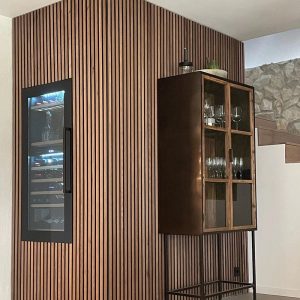
The Ultimate Guide to Acoustic Treatment Solutions: Everything You Need to Know
Creating the perfect sound environment is essential for various spaces, from home studios to offices and commercial buildings. Whether you’re dealing with excessive echo, poor sound quality, or unwanted noise interference, acoustic treatment solutions can transform your space. In this comprehensive guide, we’ll explore frequently asked questions, benefits, and practical solutions to enhance your sound experience. Many sound engineers recommend
for effective echo reduction.
Why Are Acoustic Panels Expensive? Unpacking the Costs
Acoustic panels are often perceived as costly, but their pricing is justified by several key factors:
- High-Quality Materials – Most panels are made from premium materials like fiberglass or recycled P.E.T., ensuring superior sound absorption.
- Fire Safety Compliance – Panels meet strict fire safety standards, such as ASTM E84 and ULC S102, adding to their cost.
- Aesthetic Customization – Many acoustic panels come in customizable designs, increasing production expenses.
- Shipping and Handling – Due to their size and fragility, shipping costs can be significant.
Investing in acoustic treatment solutions means prioritizing quality, safety, and efficiency for long-term benefits. Installing
strategically can maximize sound absorption efficiency.
Are Acoustic Treatment Solutions Worth It?
Absolutely! Here’s why installing acoustic panels is a smart choice:
- Improved Sound Clarity – Reduces unwanted echoes and reverberations, making speech and music clearer.
- Noise Reduction – While not entirely soundproof, panels significantly lower background noise.
- Aesthetic Appeal – Modern designs enhance the look of any space while maintaining functionality.
By integrating acoustic treatment solutions, you create a balanced and pleasant auditory environment.
The Science Behind Acoustic Panels: Do They Really Work?
Yes, they do! Acoustic panels are designed to absorb sound waves, reducing noise pollution and improving overall acoustics. Key factors influencing their effectiveness include:
- Material Density – Denser materials absorb a wider range of frequencies.
- Panel Thickness – Thicker panels provide better low-frequency absorption.
- Placement Strategy – Strategic positioning ensures maximum sound control.
With acoustic treatment solutions, you can optimize the sound quality of any space.
Can You Paint Acoustic Panels Without Affecting Performance?
Many people wonder if they can paint acoustic panels to match their decor. The short answer: It depends!
Types of Panels and Paint Compatibility
- Fabric-Wrapped Panels – Not recommended for painting, as it may reduce sound absorption.
- Foam Panels – Can be painted, but only with specialized spray paints that won’t clog the pores.
- Wooden Acoustic Panels – Often customizable with stains or paints without impacting performance.
For best results, consult the manufacturer before painting any acoustic treatment solutions.
Understanding Noise Reduction Coefficients (NRC)
The Noise Reduction Coefficient (NRC) measures how well a material absorbs sound. Here’s what you need to know:
- NRC 0.0 – 0.4 – Low absorption; sound bounces off the surface.
- NRC 0.5 – 0.7 – Moderate absorption; effective for reducing echoes.
- NRC 0.8 – 1.0 – High absorption; ideal for studios and high-noise areas.
When choosing acoustic treatment solutions, look for a higher NRC rating for better performance. Many sound engineers recommend
for effective echo reduction.
How to Compare Acoustic Treatment Solutions
When selecting the right acoustic panels, consider the following factors:
Key Features to Compare
| Feature | Importance |
|---|---|
| NRC Rating | Higher NRC means better sound absorption |
| Material | Choose from fiberglass, foam, or recycled PET |
| Panel Thickness | Thicker panels absorb more sound |
| Design & Aesthetics | Match your interior decor |
| Fire Safety Compliance | Essential for commercial use |
Evaluating these features ensures you choose the best acoustic treatment solutions for your needs.
How to Install Acoustic Panels for Maximum Effectiveness
Proper installation is crucial for achieving the best results. Follow these steps:
- Identify Problem Areas – Use a clap test or sound meter to locate where sound reflections occur.
- Plan Panel Placement – Focus on walls, ceilings, and corners where sound waves accumulate.
- Use the Right Adhesive – Opt for strong mounting tape or adhesive spray for foam panels.
- Consider Spacing – Leaving small gaps between panels can enhance absorption.
Strategic installation ensures your acoustic treatment solutions work at peak efficiency.
FAQ: Common Questions About Acoustic Treatment Solutions
How Many Acoustic Panels Do I Need?
The number of panels required depends on the room size and level of sound control needed. Generally, covering 20-30% of a room’s surface area provides noticeable improvement.
Can Acoustic Panels Be Used for Soundproofing?
Acoustic panels reduce echoes and improve sound clarity, but they do not provide complete soundproofing. For full isolation, consider adding mass-loaded vinyl or soundproof barriers.
Where Can I Get Certified Acoustic Panels?
Look for providers that offer third-party tested panels with certifications such as ASTM E84 fire ratings and NRC performance reports.
Do DIY Acoustic Panels Work?
Homemade panels can help, but they may not perform as efficiently as professionally engineered acoustic treatment solutions. If you opt for DIY, use high-density insulation and fire-resistant materials.
Final Thoughts: Elevate Your Sound Experience
Investing in acoustic treatment solutions is a game-changer for achieving optimal sound quality. Whether for a home theater, office, or studio, proper acoustic management enhances comfort, productivity, and audio performance. By understanding different panel types, installation techniques, and material effectiveness, you can create the ideal sound environment tailored to your needs.
Start optimizing your space today with high-quality acoustic treatment solutions!